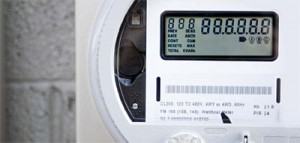Utility companies can engage with customers better and explore new revenue streams by utilising the smart grid. However, while the infrastructure is an enabler, energy companies are still seeking the most profitable business cases. M2M Now spoke to Olaf Vieselmann at Orga Systems to find out how the company is helping the sector to address new and complex billing challenges.
 As the deployment of the smart grid continues on a global scale, with it comes the need for more efficiency and the optimisation of the customer’s energy usage. But handling the complex nature of smart grids requires the use of optimised systems that can not only scale to meet the requirements of today, and in the future, but keep the total cost of
As the deployment of the smart grid continues on a global scale, with it comes the need for more efficiency and the optimisation of the customer’s energy usage. But handling the complex nature of smart grids requires the use of optimised systems that can not only scale to meet the requirements of today, and in the future, but keep the total cost of
ownership down. That’s a tall order!
Regulatory directives are pressing the utility companies for more flexible tariffs and currently, while smart meters may work for a few static cases, they can create enormous complexity when millions more try to synchronise dynamic tariffs and new rating parameters. Today, competition for a workable approach is growing in the deregulated markets and enabling differentiation. There is still a need however for revenue assurance, especially in the developing countries.
Astutely, Orga Systems, well-known for innovation in real-time charging and billing, realised that there were similarities between the new smart grid and smart metering driven requirements (such as realtime rating and pricing, dynamic tariffs, the processing of high volume data and real-time customer interaction) and its work in the telecoms space. Drawing on decades of experience, the company set about working towards a solution specifically for the utility sector. In February 2013, Orga Systems launched the new release of OS.Energy as part of its Smart Utility Suite.
“Transforming an existing infrastructure into a smart grid normally requires huge investment,” said Vieselmann. “One of the key benefits of OS.Energy is its flexible integration into existing ERP and CIS systems. This means that the utility companies can still use a large portion of their existing infrastructure. What’s more, being easily configurable and utterly scalable, it’s a great enabler for all future billing scenarios. Understanding the billing challenges that utility companies are facing today and meeting their needs, by fulfilling their highest performance requirements, is what OS.Energy is all about.”
The business case
OS.Energy aims to boost the profitability from within the smart grid by taking tariff flexibility, realtime transaction processing and customer engagement to the next level, all via a centralised rating engine. The utility companies will benefit from innovated pre-paid, post-paid and even hybrid energy offerings, advanced demand-side management (DSM) as well as enhancing the customer experience with real-time communication.
With proven off-load legacy billing systems from big data, OS.Energy implementation can help to reduce bad debt and introduce new pricing and budgeting schemes. It’s a great accompaniment to helping solve the issues surrounding pre-paid electricity and customer budget control. It can support individual spending limits such as configurable thresholds for consumer notification (via SMS for example).
One such case comes from a recent rollout of the technology in the Philippines. Meralco, an Asian energy supplier, is implementing a pilot scheme whereby 40,000 of its customers will be connected to the smart grid. Interestingly, highlighted by the company’s customer research, Meralco discovered that its users wanted the same experience of
convenience for pre-paid electricity as they do when paying for mobile cell services. OS.Energy’s pre-paid scheme, based on centralised real-time billing, means for example that customer can reload their accounts via their mobile cell phones by ‘tingi’ (perpiece- buying). For instance, Meralco’s users will know three days in advance that their energy budget is about to end, which will help them avoid disconnections and other interruptions to service provision. So, with OS.Energy, bill shock and bad debts could become a thing of the past. This kind of threshold management can also help to educate customers about their energy consumption, a key initiative for environmental targets and regulatory requirements in the smart grid world.
OS.Energy in action
Energy companies can maximise their revenues and enhance not only customer engagement, but also customer satisfaction. By connecting the metering network to the CIS (customer information system), CRM (customer relationship management) and other support systems, OS.Energy can add real-time ratings and dynamic tariff possibilities to a utility’s current infrastructure. It has integrated promotion capabilities for enabling campaigns, promotional bundles and even discounts. As well as tiered tariffs, including multilevel thresholds, it can remotely connect or disconnect customers. Performance bottlenecks in rating the data derived from meters can be resolved and new value-added
services can be better monetised, all contributing to improved revenue management.
What’s more, OS.Energy is able to adapt tariffs, and bill energy usage, in line with highly dynamic hourly spot market prices, helping balance demand and drive even greater efficiency. For example, pricing events can be used to trigger DSM for selected home devices – delivering the type of scenario that will be the norm for the smart city of tomorrow.
In summary, utility companies, as well as M2M service providers that want to offer smart grid billing as a service with real-time control and dynamic options, would do well to take a look at Orga’s OS.Energy offering. “We believe that choice and convenience for energy consumers are critical differentiators for utility companies securing profitability and success in the energy industry,” concluded Vieselmann.
M2M Now Jargon Buster
CIS = Customer Information System
CRM = Customer Relationship Management
DSM = Demand-side management
ERP = Enterprise Resource Planning
M2M = Machine-to-Machine
SMS = Short Message Service











